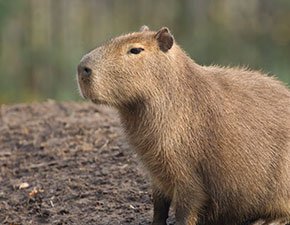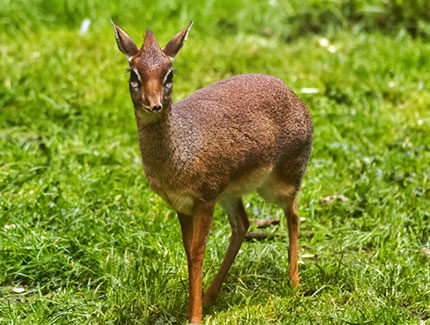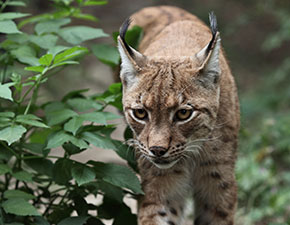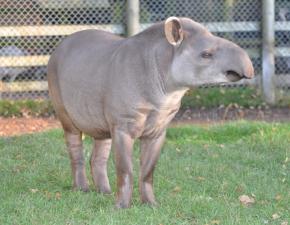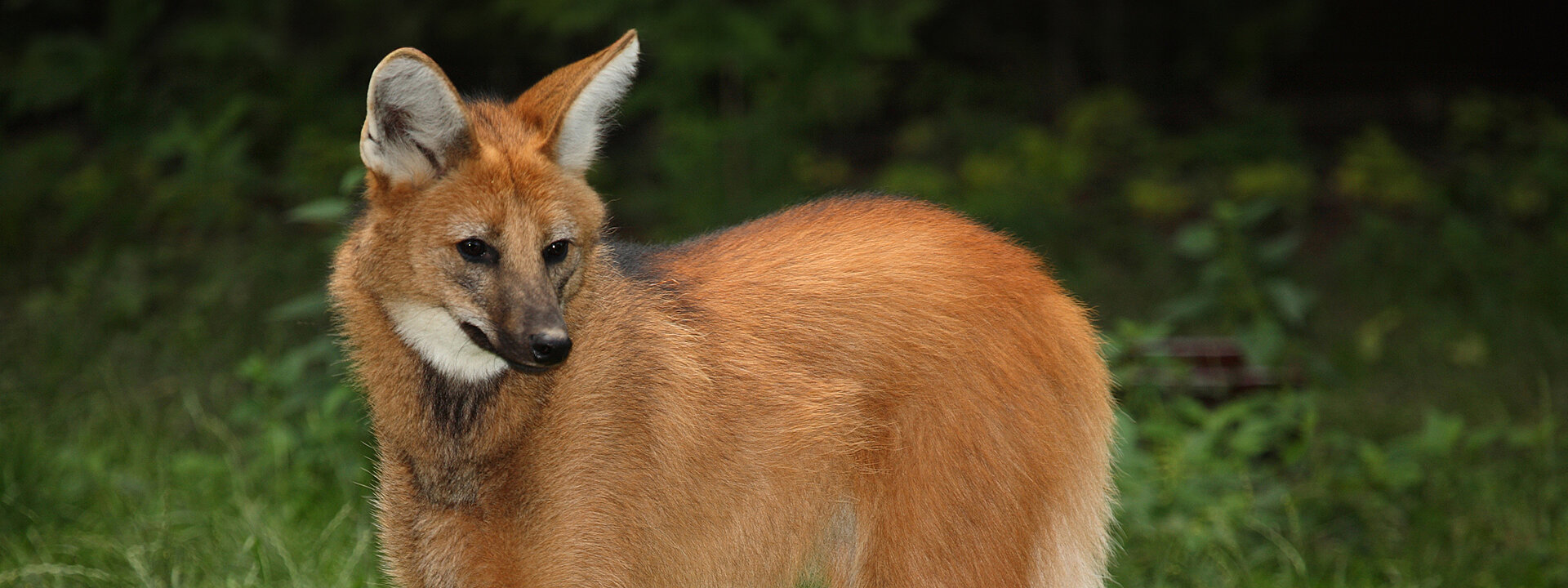
Maned Wolf
Chrysocyon brachyurus
IUCN red list status:
Near Threatened
For more information, please visit iucnredlist.org
Maned wolves are native to South America, and their range extends from northeastern Brazil to northern Argentina, Paraguay, Bolivia, and Peru. The largest population of maned wolves is in the Amazon basin in Brazil.
The Maned wolf is an omnivore that eats a variety of foods, including fruits, vegetables, small mammals, birds, reptiles, insects, and other vegetation.
They are not a social animal and don’t live in a pack. They are nocturnal, hunting only at dusk and during the night. They hardly ever move about during the day.
Maned wolf
The Maned wolf, the largest canid in South America, stands out due to its unique characteristics and adaptations.
These crepuscular animals are known for their long legs, which likely evolved to help them see over tall grasses where they hunt. They exhibit monogamous pairings and defend large territories, though males and females typically spend most of their time apart, coming together primarily during the breeding season. Although mostly solitary, they share their habitat with other canids, such as the crab-eating fox. Males have been observed regurgitating food for their young, suggesting a significant paternal role in raising offspring.
Threats to the Maned wolf include habitat loss, deforestation, road accidents, and disease, though they are protected by law in several South American countries. Habitat fragmentation is a growing concern, leading to reduced genetic diversity and further endangering the species. Conservation efforts are essential to safeguard the future of this fascinating animal.
Fun fact: The Maned wolf is known for its pungent urine, which it uses to mark territory. The smell has been described as similar to the scent of hops or another very distinctive herb.
Did you know?
Its markings resemble those of foxes, but it is neither a fox nor a wolf. It is the only species in the genus Chrysocyon which means "golden dog" in Ancient Greek.
